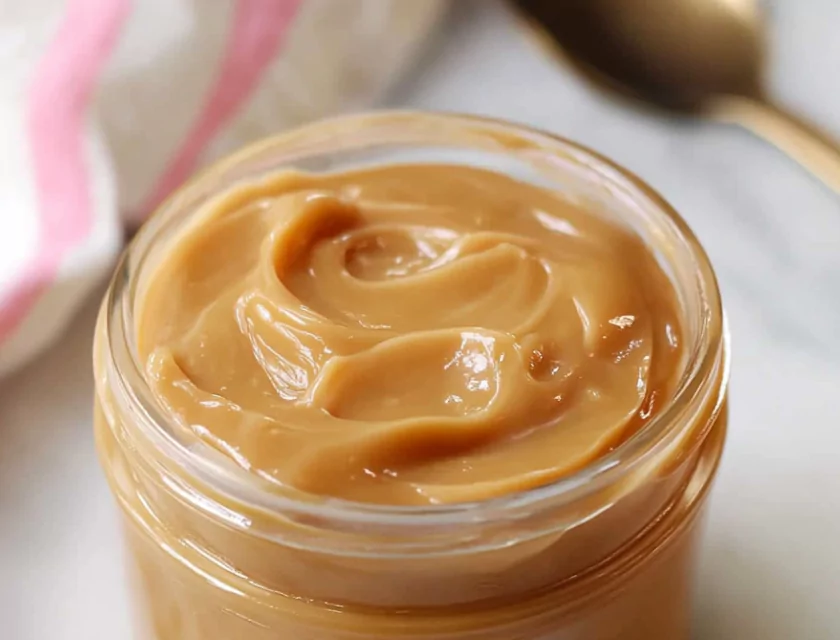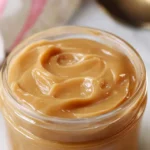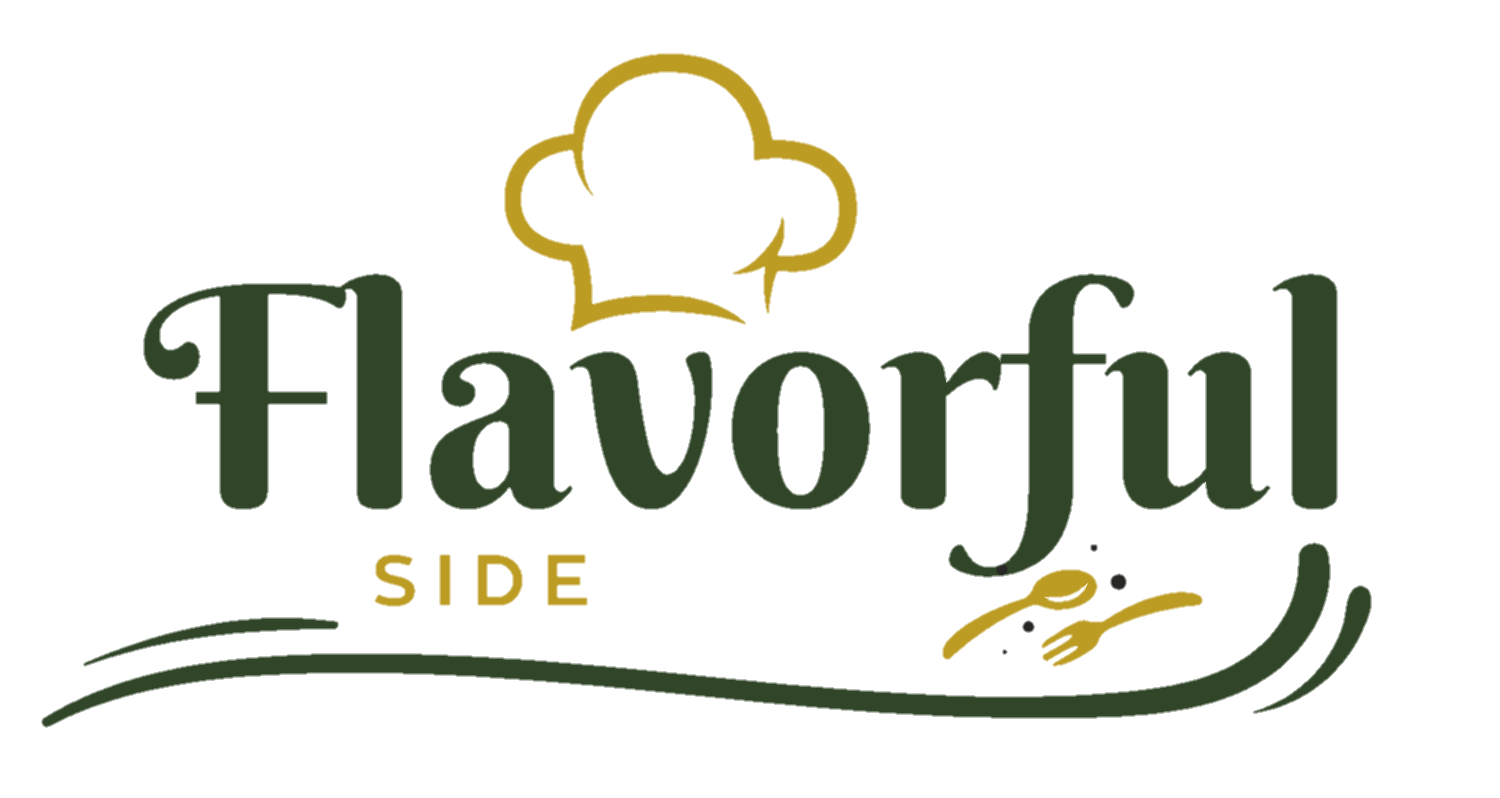Introduction
Dulce de leche, meaning “sweet milk” in Spanish, is a rich, caramel-like confection made by slowly heating sweetened condensed milk until it thickens and deepens in color. Popular across Latin America, this creamy delight is used in everything from pastries and cakes to ice creams and spreads. Unlike traditional caramel, which is made by melting sugar, dulce de leche gets its deep flavor from the Maillard reaction, where the milk’s proteins and sugars slowly transform under heat.

With its luscious texture and irresistible sweetness, dulce de leche is a staple in many households. Whether drizzled over pancakes, spread on toast, or used as a filling for alfajores, this treat is both versatile and easy to make at home. There are multiple methods to prepare it, each yielding slightly different textures and flavors.
This guide will take you through the history, cultural significance, and step-by-step preparation of dulce de leche, ensuring you achieve perfect results every time.
Brief History and Cultural Significance
Dulce de leche has a long and debated history, with several countries claiming its origin. Some believe it dates back to the 19th century in Argentina when it was accidentally discovered by a maid who left milk and sugar heating on the stove. Others trace it to colonial times when sweetened milk was a common preservation method.
While Argentina is often associated with dulce de leche, it is beloved in many countries, including Mexico, Uruguay, Chile, and Brazil, where it is known as doce de leite. Each region has its own variations, sometimes incorporating vanilla, cinnamon, or even coconut for unique twists.
Beyond its role in desserts, dulce de leche carries deep cultural significance. It is used in celebrations, gifted during holidays, and even incorporated into traditional baked goods like chocotorta in Argentina or tres leches cake in Mexico. Its popularity has spread worldwide, inspiring new culinary creations and adaptations.
Preparation Phase & Tools to Use
Prep Time, Cook Time, Cool Time, and Servings
- Prep Time: 5 minutes
- Cook Time: 1.5 to 3 hours (depending on method)
- Cool Time: 30 minutes
- Total Time: Varies by method
- Yield: About 1.5 cups per 14 oz can of sweetened condensed milk
Essential Tools and Equipment
To make dulce de leche at home, you’ll need a few key tools:
- Saucepan or large pot (for boiling method)
- Oven-safe dish and roasting pan (for baking method)
- Slow cooker (alternative method)
- Whisk or spoon (for smoothing texture)
- Foil (to cover baking dish)
- Tongs (for handling hot cans)
- Sealable jar (for storing dulce de leche)
Importance of Each Tool
- Pot or saucepan: Ensures even heat distribution and prevents scorching.
- Roasting pan: Provides the water bath needed for gentle, even cooking in the oven.
- Slow cooker: Offers a hands-off approach with controlled heat.
- Foil and tongs: Protect and assist in handling hot ingredients.
- Whisk: Helps achieve a smooth consistency after cooking.
Preparation Tips
- Always use sweetened condensed milk, not evaporated milk.
- If boiling cans, ensure they are fully submerged at all times.
- Baking yields a richer, thicker consistency with deep caramelization.
- Store in an airtight container to maintain freshness.
- For a softer dulce de leche, add a splash of milk when reheating.
Ingredients List
- 1 can (14 oz) sweetened condensed milk
Step-by-Step Instructions
Method 1: Boiling the Can
- Remove the label from the can.
- Place the unopened can in a large pot and fill with water so it is fully submerged by at least 1-2 inches.
- Heat over medium-high heat until the water reaches a simmer.
- Reduce heat to maintain a gentle simmer. Let cook:
- 2 hours for a lighter, golden color
- 3 hours for a deeper, caramelized color
- Check water levels regularly and add hot water as needed.
- Once done, carefully remove the can using tongs and let it cool completely before opening.
- Open and whisk to smooth out any lumps before use.
Method 2: Baking in the Oven
- Preheat oven to 425°F (218°C).
- Pour sweetened condensed milk into a pie dish or oven-safe bowl.
- Cover tightly with foil to prevent a crust from forming.
- Place the dish in a larger roasting pan and fill with hot water (about 1 inch deep).
- Bake for 1 hour 45 minutes, checking occasionally. Add water if needed.
- Remove from oven, allow to cool slightly, then whisk until smooth.
Method 3: Slow Cooker Approach
- Remove the label from the unopened can.
- Place the can in a slow cooker and fill with water, ensuring it’s fully submerged.
- Cook on LOW for 8–10 hours or HIGH for 4–5 hours.
- Remove, cool completely, and open when ready to use.
Notes
- Always keep the can submerged when using the boiling or slow cooker methods.
- Dulce de leche can be stored in the refrigerator for up to 2 weeks in a sealed container.
- Unopened boiled cans can last for up to 3 months in a cool, dry place.
- Avoid using cans with pull-tab lids, as they might burst under pressure.
Side Dish Recommendations
Dulce de leche is incredibly versatile and pairs well with a variety of side dishes, desserts, and complementary flavors. Whether drizzled over pastries or served alongside fresh fruits, it enhances the sweetness and texture of many treats.
1. Churros
Crispy, golden, deep-fried dough sticks coated in cinnamon sugar are a classic pairing with dulce de leche. The contrast between the crunchy exterior and the creamy, caramel-like spread makes this an irresistible combination.
2. Alfajores
These soft, crumbly cookies are a staple in Argentina and many other Latin American countries. They are traditionally sandwiched with a thick layer of dulce de leche and sometimes coated in chocolate or dusted with powdered sugar.
3. Pancakes and Waffles
A spoonful of dulce de leche can transform a simple pancake or waffle breakfast into a decadent treat. It melts beautifully over warm pancakes, creating a rich, caramel-infused topping.
4. Ice Cream
Dulce de leche ice cream is a popular flavor on its own, but it can also be used as a mix-in or topping for vanilla, chocolate, or even fruit-based ice creams. A swirl of this creamy delight enhances any frozen dessert.
5. Cheesecake
Drizzling dulce de leche over a slice of creamy cheesecake adds an extra layer of indulgence. It pairs exceptionally well with traditional New York-style cheesecake or even a lighter, no-bake version.
6. Crepes
Thin, delicate crepes spread with dulce de leche and rolled up make for an elegant yet simple dessert. They can be served warm or cold and are often accompanied by whipped cream or sliced bananas.
7. Toast and Croissants
A quick and easy way to enjoy dulce de leche is by spreading it on toast or a freshly baked croissant. The buttery, flaky texture of a croissant complements the rich, caramelized flavor perfectly.
8. Apple Slices and Other Fruits
For a healthier option, fresh apple slices, bananas, or strawberries can be dipped in dulce de leche. The natural sweetness of the fruit balances the richness of the spread, making it a satisfying yet guilt-free treat.
Nutritional Information & Health Benefits
Dulce de leche is undeniably a sweet indulgence, but it also provides certain nutritional benefits when consumed in moderation.
Macronutrients
- Calories: A typical serving (1 tablespoon) contains around 60–90 calories, depending on the preparation method.
- Carbohydrates: It is primarily composed of sugars, making it an excellent quick source of energy.
- Fats: While relatively low in fat, some versions (especially homemade with added butter or cream) may have slightly higher fat content.
- Proteins: Contains a small amount of protein, thanks to its milk-based origin.
Vitamins and Minerals
- Calcium: As a dairy-based product, dulce de leche provides a modest amount of calcium, which supports bone health.
- Phosphorus: Helps in energy production and bone maintenance.
- Vitamin B12: Present in dairy products, aiding in red blood cell formation.
Health Benefits in Moderation
- Energy Boost: The high sugar content makes it a quick source of energy, ideal for athletes or those needing a pick-me-up.
- Mood Enhancer: The natural sugars and dairy proteins can trigger the release of serotonin, promoting a sense of well-being.
- Source of Dairy-Based Nutrients: Unlike artificial sweeteners or processed syrups, dulce de leche retains some of the nutritional benefits of milk.
Potential Downsides
- High Sugar Content: Excessive consumption may contribute to weight gain, insulin resistance, or other metabolic issues.
- Lactose Sensitivity: Since it is milk-based, those who are lactose intolerant may experience digestive discomfort.
- Caloric Density: While delicious, it should be eaten in moderation to maintain a balanced diet.
Common Mistakes to Avoid & How to Perfect the Recipe
1. Overheating or Burning the Dulce de Leche
One of the most common mistakes is overheating the mixture, which can cause it to burn, resulting in a bitter taste. Whether boiling, baking, or using a slow cooker, maintaining low and steady heat is crucial for even caramelization.
2. Not Stirring When Using Open Methods
For baking or stovetop methods where the milk is exposed to air, stirring occasionally ensures an even texture and prevents lumps. If left untouched, the mixture may form a crust or develop uneven color.
3. Not Submerging Cans in Water When Boiling
If using the boiling method, keeping the can fully submerged at all times is essential. If the water level drops too low, the can could overheat and potentially explode due to pressure buildup.
4. Opening the Can Too Soon
After boiling, it’s tempting to open the can immediately, but doing so while it’s still hot can cause hot caramelized milk to spurt out, leading to burns. Always allow the can to cool completely before opening.
5. Using the Wrong Type of Milk
Only sweetened condensed milk should be used to make dulce de leche. Evaporated milk lacks sugar and won’t caramelize the same way, leading to a different texture and taste.
6. Not Covering the Dish While Baking
When baking in an open dish, covering it tightly with foil prevents a thick crust from forming on top. This ensures a smooth and creamy consistency.
7. Storing Incorrectly
Dulce de leche should be stored in an airtight container in the refrigerator to prevent it from drying out or absorbing other flavors. It will stay fresh for about two weeks when refrigerated, or up to three months if the boiled can remains sealed.
8. Not Adjusting Cooking Time for Desired Consistency
The longer dulce de leche cooks, the thicker and darker it becomes. If you prefer a lighter and runnier version for drizzling, reduce the cooking time slightly. For a thicker, spreadable consistency, extend the cooking time by an extra 30 minutes to an hour.
Tips for Storing and Reheating Dulce de Leche
Best Storage Practices
To keep dulce de leche fresh and maintain its creamy texture, proper storage is essential.
- Refrigeration: Store in an airtight container in the refrigerator for up to two weeks. Glass jars or sealed plastic containers work best to prevent it from drying out or absorbing unwanted flavors.
- Unopened Boiled Cans: If you used the boiling method, an unopened can can be stored at room temperature for up to three months in a cool, dry place.
- Freezing: Dulce de leche can be frozen for up to three months. To freeze, place it in a sealed, freezer-safe container, leaving some room for expansion. Thaw in the refrigerator overnight before using.
- Preventing Crystallization: Over time, sugar crystals may form. To prevent this, ensure your dulce de leche is stored in an airtight container and avoid excess exposure to air.
Reheating Dulce de Leche
Dulce de leche thickens when chilled, but it can easily be brought back to a smooth, spreadable consistency with gentle reheating.
- Microwave Method: Heat in short 10-15 second intervals, stirring in between until desired consistency is reached.
- Stovetop Method: Warm over low heat in a small saucepan, stirring continuously. If needed, add a teaspoon of milk to loosen the texture.
- Water Bath Method: Place the sealed container in warm water for a few minutes to soften without altering the texture.
Frequently Asked Questions (FAQs)
1. Can I make dulce de leche without sweetened condensed milk?
Yes, but it requires more effort. You can make it from scratch by slowly simmering whole milk and sugar until it thickens, but this method takes longer and requires constant stirring.
2. Why did my dulce de leche turn grainy?
Grainy texture occurs when the sugar crystallizes. This happens if it’s overheated or if it cools too quickly. To fix it, warm it slightly and whisk vigorously or blend it until smooth.
3. Can I make dulce de leche in a pressure cooker?
Yes! A pressure cooker significantly reduces cooking time. Place the unopened can in the cooker, cover with water, and cook on high pressure for 35–40 minutes. Let the pressure release naturally before removing the can.
4. What is the difference between dulce de leche and caramel?
Caramel is made by melting sugar alone or with butter, while dulce de leche is made by slowly cooking milk and sugar, resulting in a richer, creamier texture.
5. How do I make dulce de leche runnier for drizzling?
If your dulce de leche is too thick, simply warm it up and stir in a small amount of milk or cream until you reach the desired consistency.
6. Can I use plant-based alternatives to make dulce de leche?
Yes! You can make a dairy-free version using coconut milk and sugar. The result will be similar in texture but will have a slight coconut flavor.
7. What’s the best way to use dulce de leche in baking?
Dulce de leche works great as a filling for cakes, cupcakes, and cookies, as well as a drizzle over cheesecakes or brownies. It can also be swirled into ice cream for a delicious caramel-like flavor.
8. Can I overcook dulce de leche?
Yes. If cooked too long, it can become too thick or dry. Overheating can also cause a burnt taste. Keep an eye on the cooking time to achieve the perfect consistency.
Creative Uses for Dulce de Leche
Dulce de leche isn’t just for spreading on toast! Here are some unique and delicious ways to incorporate it into your cooking and baking.
1. Coffee and Lattes
Stir a spoonful of dulce de leche into your morning coffee or latte for a caramel-infused twist. It dissolves beautifully and adds a rich, sweet flavor.
2. Cake Fillings and Frostings
Use dulce de leche as a layer in cakes or mix it into buttercream frosting for a sweet and creamy topping. It pairs exceptionally well with chocolate, vanilla, or cinnamon-flavored cakes.
3. Milkshakes and Smoothies
Blend dulce de leche with milk and ice cream to make a rich and indulgent milkshake. For a healthier option, add it to banana smoothies for extra creaminess.
4. Brownies and Blondies
Swirl dulce de leche into brownie batter before baking for a caramel-marble effect. It adds extra moisture and enhances the chocolate flavor.
5. Tarts and Pastries
Use dulce de leche as a filling for mini tarts, éclairs, or puff pastry turnovers. It caramelizes slightly when baked, creating a delicious gooey center.
6. Yogurt and Granola
For a breakfast treat, mix dulce de leche into Greek yogurt and top with granola and fresh fruit. This adds a dessert-like twist to a healthy meal.
7. Bread Pudding and French Toast
Add dulce de leche to the custard mixture for bread pudding or drizzle it over French toast for an extra layer of sweetness.
8. Homemade Candy and Fudge
Use dulce de leche as a base for caramels or fudge, combining it with chocolate or nuts for extra flavor. It sets beautifully and gives a melt-in-your-mouth texture.
9. Empanadas and Pastry Fillings
Fill sweet empanadas or hand pies with dulce de leche before baking for a traditional Latin American dessert. Serve them warm with powdered sugar on top.
10. Popcorn Glaze
Melt dulce de leche slightly and drizzle it over freshly popped popcorn for a caramel-coated treat. Sprinkle with sea salt for a sweet-salty contrast.
Conclusion
Dulce de leche is a beloved treat with a rich history, multiple preparation methods, and endless culinary applications. Whether you enjoy it as a simple spread, a cake filling, or a key ingredient in a decadent dessert, it is a versatile, easy-to-make delight that brings sweetness to any dish.
From classic pairings like churros and alfajores to innovative uses like caramel coffee, brownie swirls, and yogurt toppings, this creamy confection is a must-have in every kitchen.
Now that you’ve mastered making and using dulce de leche, you can experiment with new recipes and flavor combinations to create your own signature desserts. However you choose to enjoy it, one thing is certain—dulce de leche makes everything better!
Print
Dulce de Leche
- Total Time: Varies by method
- Yield: 1.5 cups 1x
- Diet: Vegetarian
Description
This dulce de leche recipe shows you how to make a rich, creamy, caramel-like sauce with simple ingredients and easy cooking methods. Use it as a spread, drizzle, or dessert filling!
Ingredients
- 1 can (14 oz) sweetened condensed milk
Instructions
Boiling Method:
- Remove the label from the can.
- Submerge in a large pot of water, covering by 1-2 inches.
- Simmer for 2-3 hours (2 hours for light, 3 hours for dark).
- Keep the water level consistent, refilling as needed.
- Let the can cool completely before opening.
Baking Method:
- Preheat oven to 425°F.
- Pour condensed milk into a baking dish, cover with foil.
- Place dish in a larger pan filled with hot water (1-inch depth).
- Bake for 1 hour 45 minutes, stirring halfway.
- Let cool, then whisk until smooth.
Notes
- Store in an airtight container in the fridge for up to 2 weeks.
- Unopened boiled cans last up to 3 months at room temperature.
- Reheat gently if needed for drizzling.
- Prep Time: 5 minutes
- Cook Time: 2-3 hours
- Category: Dessert
- Method: Boiling, Baking
- Cuisine: Latin American
Nutrition
- Serving Size: 1
- Calories: 60-90
- Sugar: 10g
- Sodium: 15mg
- Fat: 2g
- Saturated Fat: 1g
- Unsaturated Fat: 0.5g
- Trans Fat: 0g
- Carbohydrates: 12g
- Fiber: 0g
- Protein: 1g
- Cholesterol: 5mg


Leave a Comment